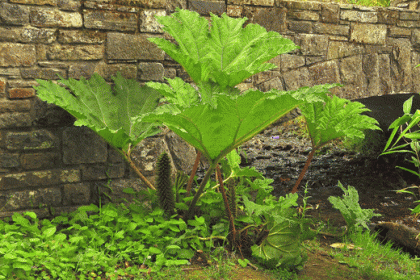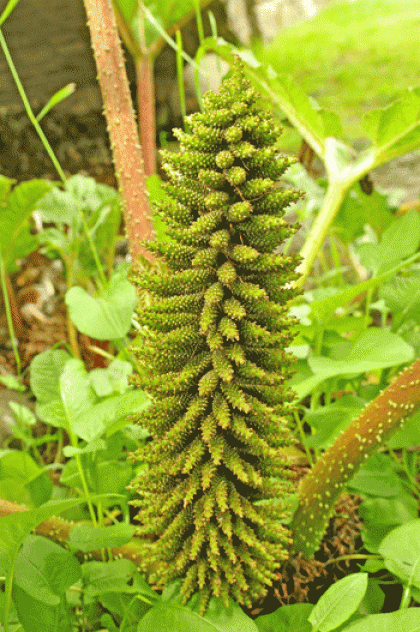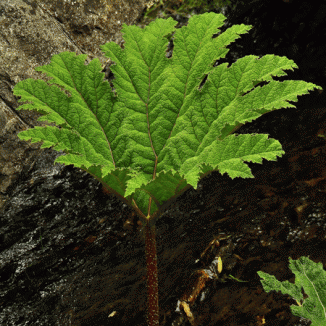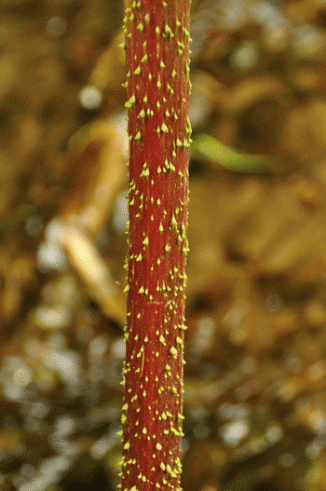Known to many as Gunnera, this was once a rare and amazing sight. Now this huge perennial has become quite naturalised, particularly in the west of Ireland where its densely-packed inflorescences of 1mm, stalkless flowers are borne in 1m-long, cone-shaped panicles; without petals, they have tiny, reddish-brown sepals. They flower in July and August. The long, stout stems arise from rhizomes. The leaves are 2m-wide, toothed and palmately-lobed and are on stout stalks which have green bristles. They are very quick-growing in spring. This plant favours damp fields, ditches, coastal cliffs, river-banks, derelict gardens and hillsides. It is a perennial, introduced from Chile – also known as Chilean Rhubarb – and it belongs to the Gunneraceae or Giant-rhubarb family.
My first record of seeing this plant was in Derrynane, Co Kerry in 1952 and I photographed it in Lismore, Co Waterford in 2013.
If you are satisfied you have correctly identified this plant, please submit your sighting to the National Biodiversity Data Centre




